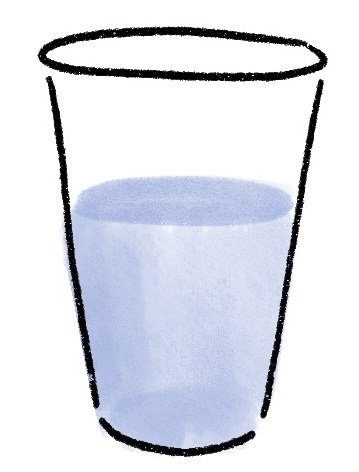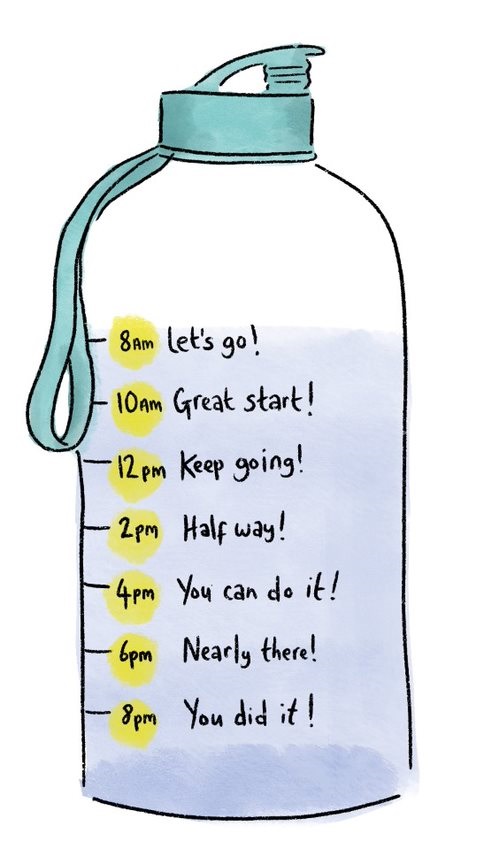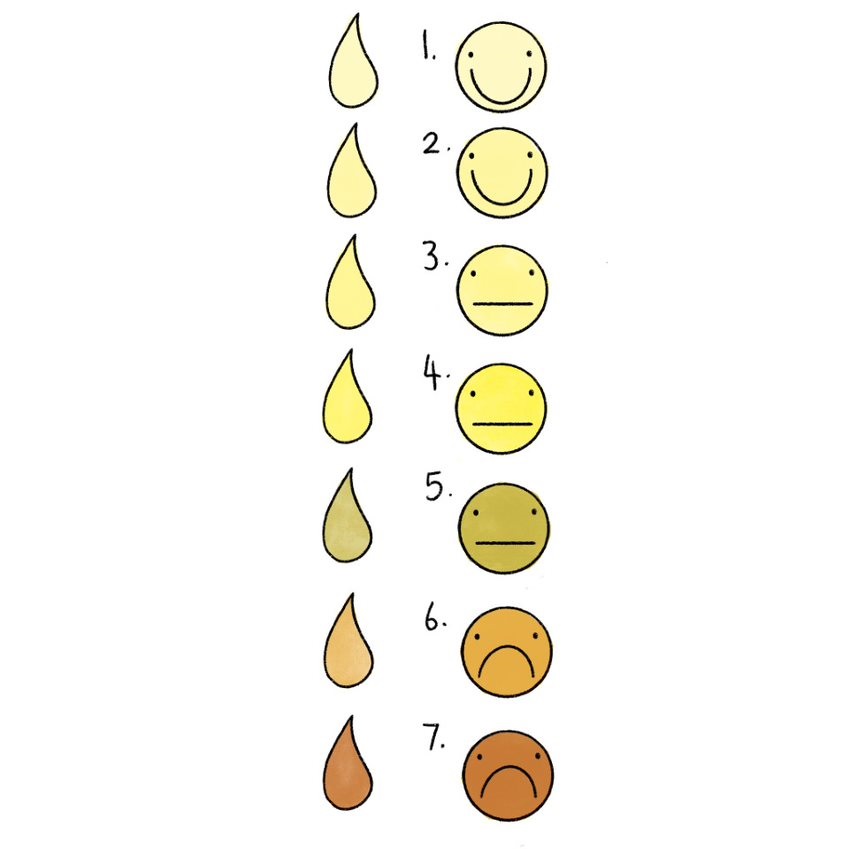Healthy Drinking
Recommended fluid intake
 Here are recommendations for adequate intake, this is a guide and should not be interpreted as a specific requirement. Higher intake will be required for children who are physically active or exposed to hot environments. Obese children may also require higher total water intake.
Here are recommendations for adequate intake, this is a guide and should not be interpreted as a specific requirement. Higher intake will be required for children who are physically active or exposed to hot environments. Obese children may also require higher total water intake.
| Age | Water from Drinks |
|---|---|
| 0-6 months | 120 ml per kg |
| 7-12 months | 600ml |
| 1-3 years | 900ml |
| 4-8 years | 1000-1400ml |
| 9-13 years (girls) | 1200-2100ml |
| 9-13 years (boys) | 1400-2300ml |
| 14-18 years (girls) | 1400-2500ml |
| 14-18 years (boys) | 1400-2500ml |
Fluid Intake
 What you drink plays an important role in how your bladder behaves. Regular fluid intake will help your child’s bladder to hold larger volumes of urine. If drinks are limited the bladder doesn’t stretch and it can make problems like bedwetting worse. Drink at least 6-8 cups of drink a day.
What you drink plays an important role in how your bladder behaves. Regular fluid intake will help your child’s bladder to hold larger volumes of urine. If drinks are limited the bladder doesn’t stretch and it can make problems like bedwetting worse. Drink at least 6-8 cups of drink a day.
Spread the drinks throughout the day
1 before school, 3 at school, 3 in the evening, Last drink at least 1h before bed.
Don’t worry! Things might get worse before they get better – a bladder this is not used to storing much wee won’t instantly manage increasing drinks. It takes time to encourage the bladder to behave.
What to drink
The best drinks for children are water and milk as they will not damage teeth. Fizzy drinks and sugary squash/cordial can provide excess energy and lead to unnecessary weight gain.
Drink:
- Water is best because it does not cause tooth decay.
- Milk in moderation
- Well diluted fruit juice and sugar free squash are ok (one part squash to ten parts water)
- Fresh juice and smoothies, give half pure juice/ half water. They contain quite a lot of sugar and should only be offered once per day.
Avoid drinking:
- Caffeine
- Fizzy drinks
- Artificial colour/ flavouring/ sweeteners
- Tea is not recommended for children as it reduces iron absorption.
Offering drinks with straws can encourage children to drink more and quicker. Timed water bottles can help at school if open cups are not available.
Maintaining Hydration
Concentrated wee is not good for bladders. It can irritate the bladder and make it squeeze when it shouldn’t. The urine colour chart is a simple tool that can be used to assess if children are drinking enough fluids throughout the day to stay hydrated. If the urine colour matches the colours number 1, 2 or 3 they are hydrated. If the urine colour matches colours 4-7 they are dehydrated and need to drink more fluid. Some medicines and vitamins can discolour the urine. Whilst drinking more water may encourage children to go to the toilet more often, achieving a healthy toilet function for children can result in fewer soiling incidents and prevent urinary tract infections.
fluids throughout the day to stay hydrated. If the urine colour matches the colours number 1, 2 or 3 they are hydrated. If the urine colour matches colours 4-7 they are dehydrated and need to drink more fluid. Some medicines and vitamins can discolour the urine. Whilst drinking more water may encourage children to go to the toilet more often, achieving a healthy toilet function for children can result in fewer soiling incidents and prevent urinary tract infections.
Drinking Reward Chart
A reward chart for drinks is a great way to encourage regular fluid intake. Taking regular drinks is really important to help the bladder stretch.
How to complete the Drinking Reward Chart
- Aim for 6 to 8 drinks a day
- Make sure drinks are spread evenly throughout the day
- Encourage your child to colour or tick the beakers after they have finished their drink
- Each beaker represents one drink
- Encourage the child to drink the whole drink straight away
- Talk with your child’s teacher and explain the importance of giving them access to their drink all the time
- When the child finishes a drink, they can put a tick, smiley face or sticker in the beaker
- Agree an aim for the week and offer a reward, make the target achievable


